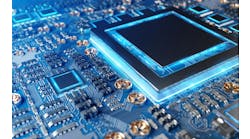We are living in a transformative age of wonder.
Just a couple of years ago, when an automation company mentioned maintenance, it was most likely referring to ensuring the control system was kept in operational condition. Plants had CMMS software and maintenance techs to track and repair machine failures.
Now, the Industrial Internet of Things (IIoT) has enabled physical asset monitoring at the cloud level. Equipment reliability, and the OEM service contracts that go with it, has become the new mantra of controls technology. But that’s just the start.
Just five years ago, most controls engineers didn’t even know what an “industrial network” was.
Now, the industrial network—operations technology (OT)—is converging with the enterprise network—information technology (IT)—so data analytics can be performed in the cloud. This in turn will enable machine control decisions to be made, based on that cloud analysis, and then communicated to the intelligence in edge devices such as drives and sensors. How long before safety becomes a cloud function and there’s no longer a need for PLCs or a DCS at all?
In February, I made my annual trip to Orlando, Florida, for the ARC Forum, the yearly gathering of automation leaders who typically confirm the trends that are shaping the industry. This year’s event was especially enlightening, but not for obvious reasons.
If you haven’t heard of the IIoT yet, let me be the first to welcome you back from your coma. What struck me though was that IT giants and new software startups are the big drivers behind this race to the cloud. And traditional OT giants are partnering with them to share in the opportunities that will surely come from this new-found information cornucopia.
Also read: Will the next age be the Human Internet of Things?
“We are seeing the world changing,” asserted Andy Chatha, president and CEO of ARC Advisory Group, who opens each ARC Forum with his remarkably accurate prediction of what the new year has in store, based on his company’s research and analysis. “Aerospace is being changed by SpaceX, Blue Origin and numerous drone companies. Industry after industry is being transformed, and mostly by companies outside of the industry.”
Many technologies—mobile devices, cloud apps, analytics, 3D visualization, additive manufacturing, wireless communications, robotics, drones, machine learning and open platforms—are maturing and emerging. “New smart machines get better every day,” said Chatha. “When a plant has smart machines and you don’t, how are you going to compete? Aerospace has been ahead of most industries for decades. For example, it has open platforms. More and more industries are moving toward open platforms. We need open systems that are easy to use, easy to implement, easy to maintain, easy to upgrade, highly reliable, highly flexible and highly secure.”
To leverage the IT-OT convergence, you need to have your process engineers working with software developers, explained Chatha. “Automation experts need to work with data scientists,” he said. “Process safety experts need to work with cybersecurity experts. Smart, connected, self-learning machines are emerging with smart sensors and measurement devices, smart actuators and valves, smart motors and drives, smart pumps and compressors, smart machine tools, smart robots and drones. You’re going to need some sort of standardization to integrate all of these. Compressor companies are selling compressors and offering remote monitoring services. Increasingly every product is going to have a lot of software.”
Open platforms can help to improve asset health and uptime, operating performance, safety and risk management, supply chain and logistics, worker experience and business processes, proclaimed Chatha. “An open platform enhances your ability to innovate,” he explained. “Innovation-driven companies have to have a relationship with their customers for life. Collaboration has to be taken to a higher level. You have to have strong IT, OT and engineering collaboration. Embrace open and secure software platforms. They are customer-centric and demand-driven. They seek opportunities to transform plant and business operations. They embrace technology and are an innovation-friendly culture.”
One of those cultures can be found at IBM, which created the world’s greatest chess player and Jeopardy! contestant, Watson.
“Today we generate 2.5 exabytes of data, and we only see and use a small sliver of that data,” said Rob High, IBM fellow, vice president and CTO of Watson. “By 2020, we’ll generate 44 zettabytes of data,” said High, who spoke about cognitive computing at ARC Forum.
“Finding the stuff that’s most relevant to us and being able to identify the data that will change the way we think and make decisions—that’s where cognitive computing will have the biggest impact,” High predicted.
Cognitive systems are able to learn their behavior through education that supports forms of expression that are more natural for human interaction whose primary value is their expertise that continue to evolve as they experience new information, new scenarios and new responses and does so at enormous scale. “Cognitive systems amplify human cognition,” explained High. “How do we lead people to come up with ideas they might not have come up with on their own? Cognitive systems don’t do your thinking for you. Cognitive systems attempt to reason about a problem space in a way that is similar to human thinking so that the conclusions are intuitively obvious.”
For example, to prepare for Jeopardy!, Watson had to consume 200 million pages of data and then be able to respond in fewer than three seconds. It did OK, defeating the show’s top human competitors, Ken Jennings and Brad Rutter, in a 2011 competition.
After Jeopardy!, the medical community called IBM to see if Watson might be able to help with reading incredible amounts of literature—it would take doctors about 160 hours/week of reading time. “We tackled cancer treatment plans,” explained High. “We had to start with the patient’s medical records and then inform oncologists’ decisions based on more than 600,000 pieces of evidence and 2 million pages of text from 42 publications. Watson analyzed patient data against thousands of historical cases.”
Now move those kinds of cognitive capabilities to the cloud, and sprinkle in an application-development platform with open standards. All of a sudden, that same type of data analysis can have a huge impact on machinery.
IBM Bluemix is a cloud-based, next-generation, open-standards platform.
SparkCognition, one of more than 500 Bluemix partners, has developed a Watson-powered advisory application that enables maintenance directors and mechanics to conduct machine-to-human dialogue for accurate troubleshooting.
“A new dimension we’re exploring is the ability to react between humans and machines, to facilitate what is natural for us and for cognitive systems to communicate with written, verbal, visual and tactile human expression,” said High. “Within 10 years, cognitive systems will be to computing what transaction processing is today. To be able to tap into that massive volume of data, we’re going to need cognitive systems.”
Homepage image by Raysonho @ Open Grid Scheduler / Grid Engine (Own work) [CC BY 3.0], via Wikimedia Commons





